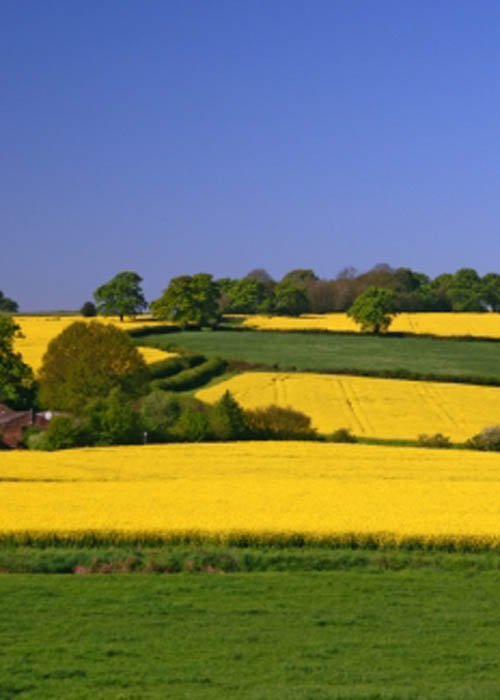
Twenty-one years of agri-environment schemes have seen farmers in Kent make a huge difference to wildlife and landscape across the county, Rural Affairs Minister Jonathan Shaw said today, Open Farm Sunday.
Launching a campaign celebrating 21 years of the schemes today at an Open Farm Sunday event, Jonathan Shaw visited Bank Farm in Kent to see how their agri-environment agreements have brought a variety of wildlife back to the farm and enabled the land to flourish.
Over the coming months Defra and Natural England will be celebrating the success of these schemes to highlight the significant contribution they make to the conservation and protection of some of England's most important landscapes and habitats.
Agri-environment schemes work by providing Government-funded financial support to farmers to manage and conserve the land with a focus on 'green farming' such as creating habitats for wildlife and to protect the English landscape.
Bank Farm, which has been in farmer Doug Wanstall's family since 1918, has two agri-environment agreements which have had a significant impact on wildlife across his land. There are now lapwings nesting on the summer fallow land, a thriving colony of water voles on the River Stour, barn owls, kingfishers and many types of insects being attracted to the farm because of environmental land management practices adopted as part of the agreement.
Jonathan Shaw said:
"Three-quarters of our land is managed by farmers and landowners, and they are a vital part of continuing to enhance the beauty of the English landscape and conserve and protect our much-loved native wildlife. Farms like Bank Farm are a fantastic example of the real benefits that agri-environment schemes can bring. The schemes are open to all farmers and, with Government investment of almost #3billion over the next five years, we are committed to seeing this great work continue."
Sir Martin Doughty, Natural England chair, said:
"Green farming schemes have resulted in some great success stories for wildlife and the health of our countryside over the past 21 years.
These schemes not only make a major contribution to the UK's commitments on farmland birds but they also help bring Sites of Special Scientific Interest into favourable condition. Natural England will continue its efforts to improve these schemes to find incentives that land managers buy into and farmers find attractive to bring more land into these agreements."
Caroline Drummond, chief executive of LEAF (Linking Environment and
Farming) which co-ordinates Open Farm Sunday, said:
"The last 21 years have seen really positive changes for the environment and LEAF looks forward to continuing to work with Defra and Natural England to enrich biodiversity on farms and to encourage a stronger relationship between consumers and our countryside."
Over five million hectares of land in England, an area roughly twice
the size of Wales, are now covered by agri-environment schemes. The
schemes have achieved:
* 30,000km of restored or newly planted hedgerows (with a further 90,000 km of existing hedgerows being managed in an environmentally friendly way)
* 2,600km of dry stone walls
* Increases in numbers of rare birds such as the grey partridge, stone curlew and cirl bunting
* 800 farms offering educational visits to more than 100,000 visitors and schoolchildren per year.
